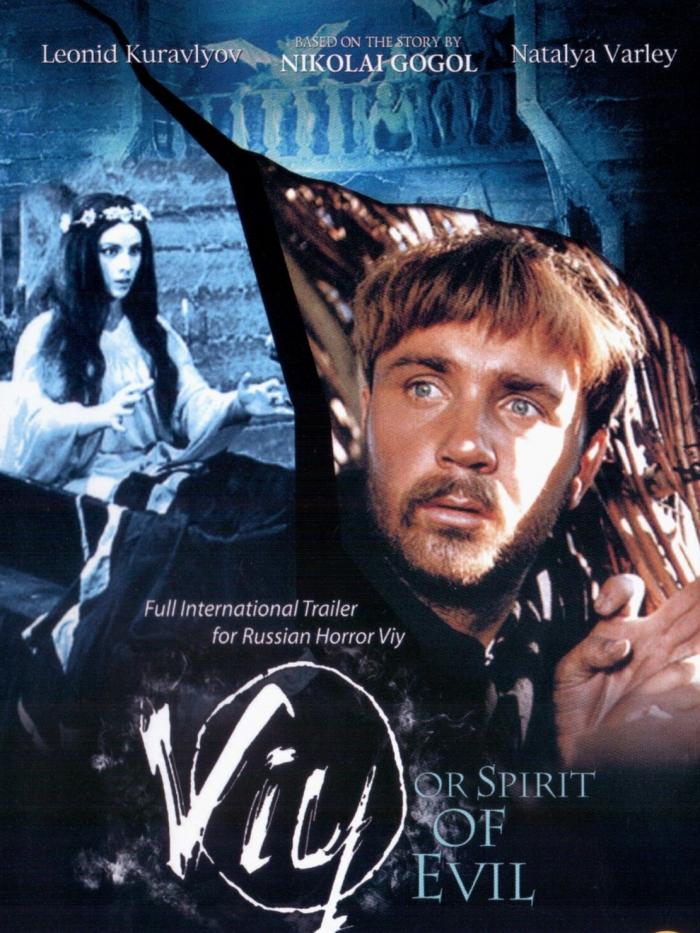RETRO REVIEW: '60's Russian Film 'Viy' Is Bewitching Horror Gem
FTC Statement: Reviewers are frequently provided by the publisher/production company with a copy of the material being reviewed.The opinions published are solely those of the respective reviewers and may not reflect the opinions of CriticalBlast.com or its management.
As an Amazon Associate, we earn from qualifying purchases. (This is a legal requirement, as apparently some sites advertise for Amazon for free. Yes, that's sarcasm.)

Compared to the films originating from England’s famed Hammer studios and the low budget assembly-line William Castle and Roger Corman productions that inundated American drive-ins in the 1960’s, Soviet-bloc era movie houses weren’t renown as hotbeds of horror. Celluloid terrors of the day were too often demonized by Russian propagandists hidden behind the Iron Curtain as proof of Western moral decadence, which makes the bone-chilling folklore-based anomaly of 1967’s Viy (available free to watch on Tubi) all the more fascinating.
When the students at a rural seminary are dismissed for summer break, shy, gentle Khoma (Leonid Kuravlyov) and two of his friends become lost in the night on their way home. Stopping for refuge at an isolated farmhouse, the trio are skillfully separated by the wizened crone who lives there; after Khoma rebuffs the old woman’s attempts at seduction in the barn, she takes revenge by ensorcelling him and riding the youth across the countryside like a horse. When he at last breaks free from the witch’s spell, Khoma discovers his elderly would-be suitor has inexplicably transformed into the ravishing porcelain-skinned maiden Pannochka (Natalya Varley). Upon waking alone the next day, however, and convinced the entire episode was merely a dream, Khoma is shocked to learn that not only was Pannochka discovered dead that morning, but that she requested him by name to perform the funeral watch over her body before passing away. Bound now both by his religious duty and local custom, Khoma must spend three nights sitting alone and praying over the witch’s corpse, but he is unprepared for the supernatural onslaught that bedevils him, as every evening Pannochka returns to life in order to summon an array of unearthly forces to torment him...
As the first official fright flick released in the USSR, Viy stands as a tour-de-force of hallucinogenic imagery, astonishing practical effects and an enduring example of properly executed pagan folk horror. The story itself is straightforward, almost simple, but unlike so many stuffy drawing-room horror dramas of similar vintage, the kinetic direction by Konstantin Yershov and Georgi Kropachyov infuses the film with movement: from scenes of dancing Cossacks and invading night creatures, to the simple act of walking through the seminary gates, the camera is in constant, restless motion, and it’s this energy that keeps the sparse narrative from stagnating. The acting, too, rivals any Hollywood product of the day; as the bedeviled Khoma, actor Kuravlyov exudes palpable distress, and as the film progresses and Pannochka’s nightly assaults wear on him, he slides further into despair; he questions his own sanity, his religious beliefs—at one point he even attempts to physically run from his obligation, only to be caught—but in heroic fashion he ultimately sacrifices himself to the dreadful task at hand. In the guise of Khoma’s adversary, Natalya Varley represents the underworld incarnate; clad in her burial gown and crowned with a ring of flowers, Pannochka’s Slavic beauty, sensuous stare and beguiling voice belie her sinister nature. Lush, gothic backdrops ensure almost every scene brims with caskets, candles, skeletons and shadows, yet the true star of Viy remains the downright psychedelic supernatural sequences. Utilizing a spectrum of still-impressive optical legerdemain, reaching hands emerge from floorboards, coffins float through the air and, in a bravura climax, a host of hideous humanoids crawl from the walls presaging the appearance of the titular demon.
A true hidden horror gem ripe for rediscovery, the flawlessly executed effects and steadfast performances ensure that a new generation of horror hounds will find Viy just as enthralling today as when it was originally released.
I hereby grant Viy a well-deserved 4.5 (out of 5) on my Fang Scale. Recommended for fans of Hammer, Amicus, Midsommar, The Wicker Man, The VVitch, and pagan horror in general.


